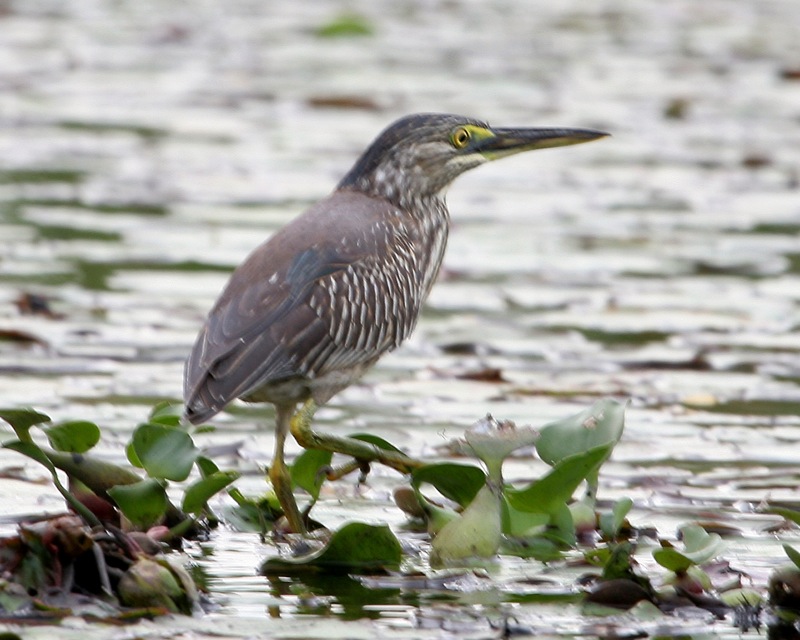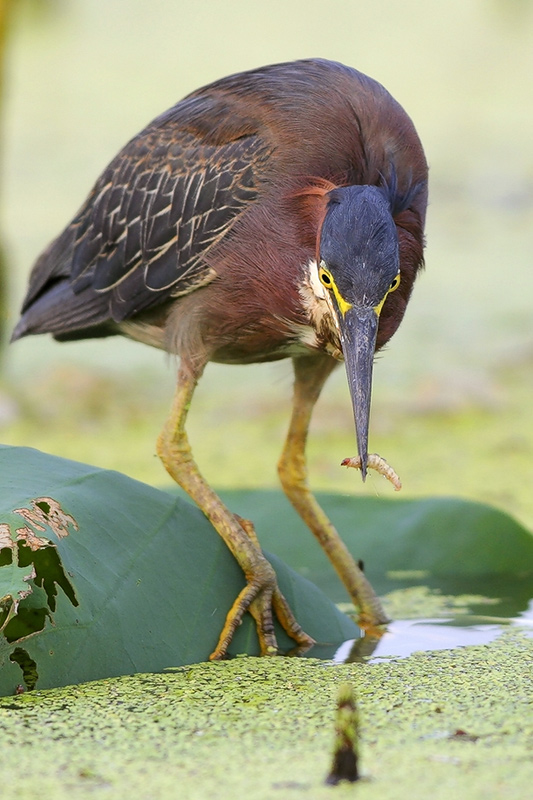Interesting Facts
-
 The name green heron or green-backed heron is often used
to describe a complex of two or three different heron
species. The green heron used to be considered to be
conspecific (belonging to the same species) with the closely
related striated heron. The striated heron doesn’t live in
North or Central America, but instead can be found along the
wetland areas from west Africa to Japan and also South
America. The Galapagos heron sometimes is also thrown in
with these other two because of its small size.
The name green heron or green-backed heron is often used
to describe a complex of two or three different heron
species. The green heron used to be considered to be
conspecific (belonging to the same species) with the closely
related striated heron. The striated heron doesn’t live in
North or Central America, but instead can be found along the
wetland areas from west Africa to Japan and also South
America. The Galapagos heron sometimes is also thrown in
with these other two because of its small size.
- Green herons have an elaborate set of calls and postures that they use to communicate with other herons. Different signals are used for mating dances, warning calls, territorial displays, and it has been recently suggested, migration.
- The green heron is equally successful in both salt and fresh water habitats. This is important, because the loss of aquatic habitat continues to be a growing concern for many species.
- The green herons on occasion will dive head first into deep waters to swim after prey such as perch.
- Green herons are persistent fisherman, being one of only a few bird species observed using tools/bait for hunting. One researcher even reported watching a heron drop the same bait into the water more than 28 times before a fish finally bit!
- Green herons are very good at climbing and even chicks as young 1-2 weeks old can climb on branches using their wings and beaks.
-
Green herons are the smallest of the North American herons.
-
Green herons can aim there excrement at the eyes of their predators as a defense mechanism
-
Although green herons are considered to be widespread and common, their shy nature combined with their well camouflaged exterior and odd feeding times makes them hard to spot.

